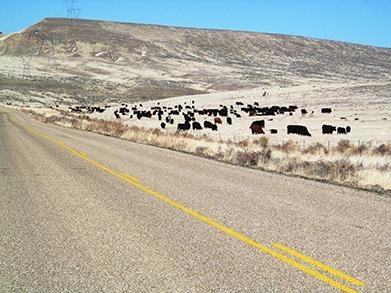
Agricultural Research Service (ARS) scientists in Boise, ID, are using cattle to promote ecological restoration of western rangelands overrun by invasive grasses, such as cheatgrass and medusahead. The practice known as prescribed grazing, is intended to have livestock feed on the harmful grasses at specific places and times to promote protection from wildfires and enhance rangeland conservation.
Scientists at the Northwest Watershed Research Center in Boise, are working on a project to restore damaged rangelands using flexible management approaches. The project is part of the Long-Term Agroecosystem Research (LTAR) Network of coordinated research sites across the nation that develop new management strategies focusing on agricultural productivity, environmental quality, and human well-being in conjunction with climate change.
“Cheatgrass and medusahead are two invasive annual grasses that are very problematic in the Great Basin and other areas of the west because these species are highly flammable,” said Pat Clark, ARS rangeland scientist. He added that the presence of these grasses causes more frequent wildfires, which often become megafires of 100,000 acres or more.
“We’re using prescribed cattle grazing as a tool that’s readily available on the landscape and applying it in a way that we can do this year-in and year-out,” Clark said. “We expect this will reduce annual grass presence and allow desirable plant species like perennial bunchgrasses and sagebrush to recover.
“We’ve been doing what’s called High-Intensity Low Frequency (HILF) grazing and it’s part of our LTAR Common Experiment, which contrasts prevailing and aspirational agricultural practices,” he explained.
The ARS team also conducted a more targeted grazing approach to protect people and resources from cheatgrass-fueled wildfires. Starting in 2017, Clark’s team partnered with western cattle ranchers and the Bureau of Land Management on a 5-year project to “evaluate the efficacy of targeted cattle grazing for fuel break creation and maintenance,” within the Great Basin areas of Idaho, Nevada, and Oregon. While this project ended in 2023, ARS continues to collaborate with numerous livestock ranchers and growers to develop more lasting efforts to preserve and restore U.S. rangelands. – Tami Terella-Faram, ARS Office of Communications


